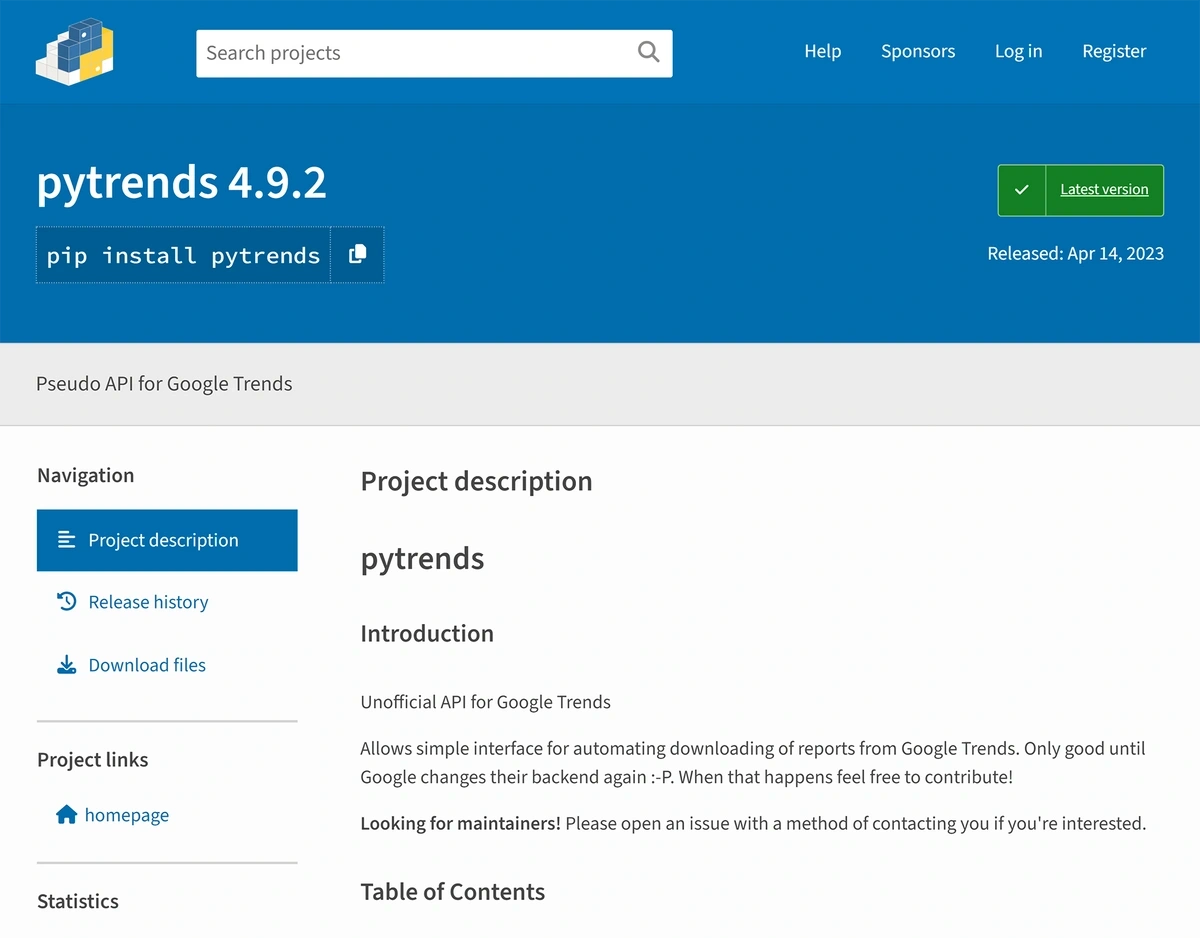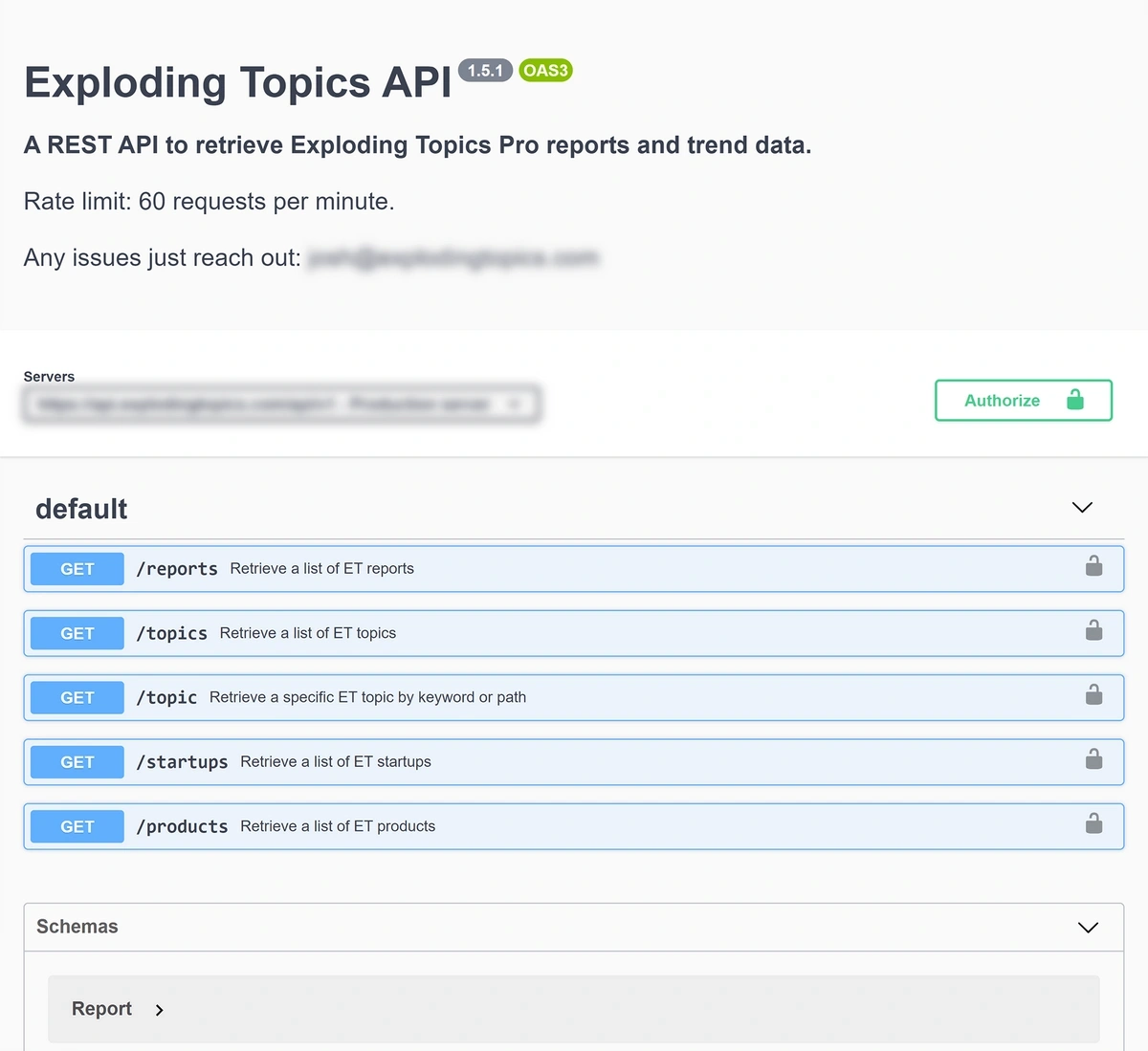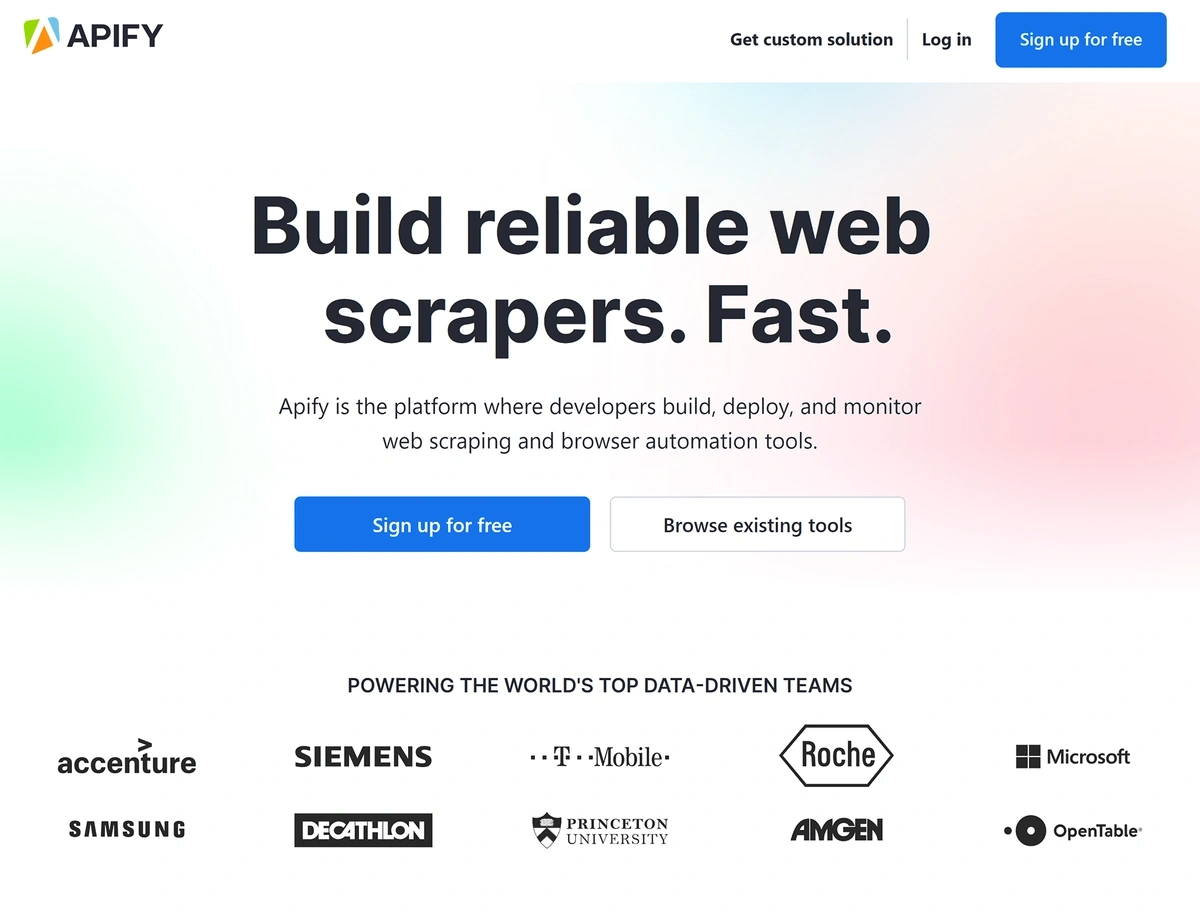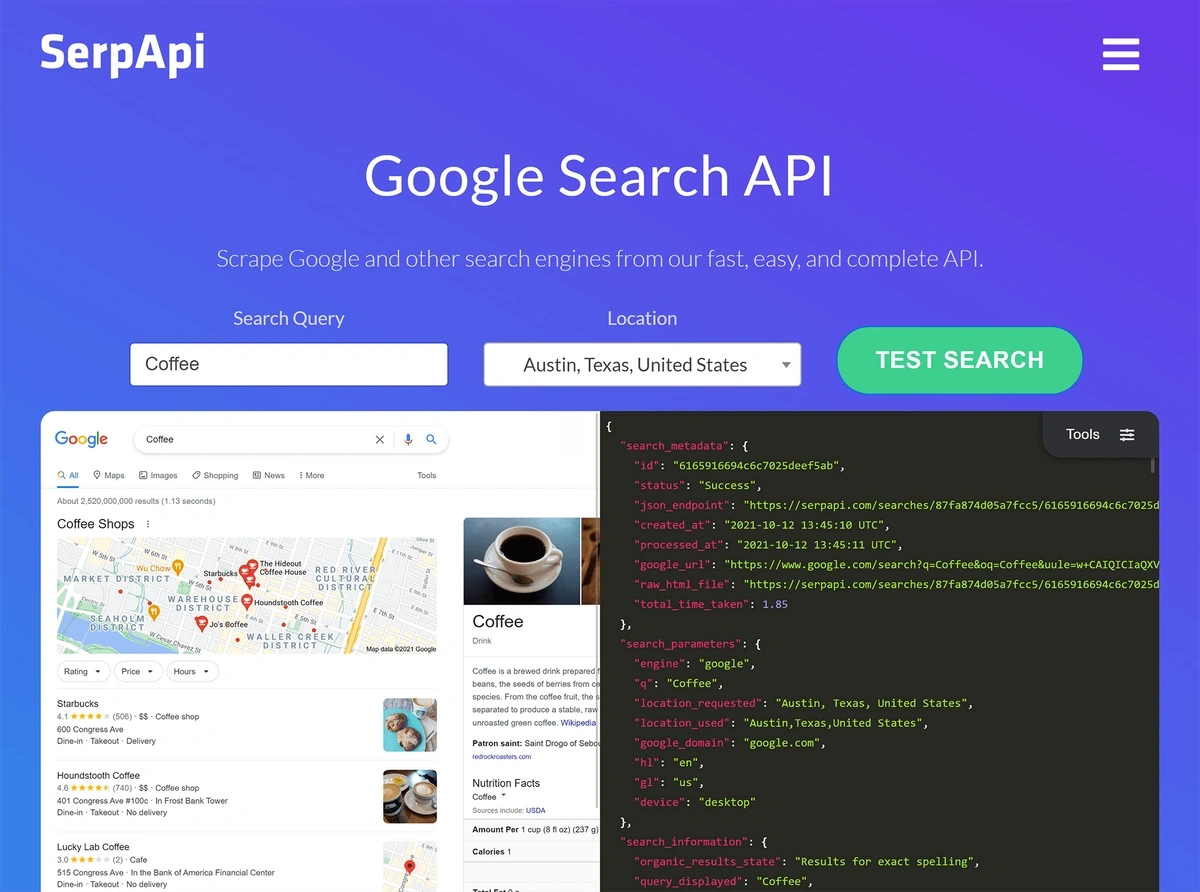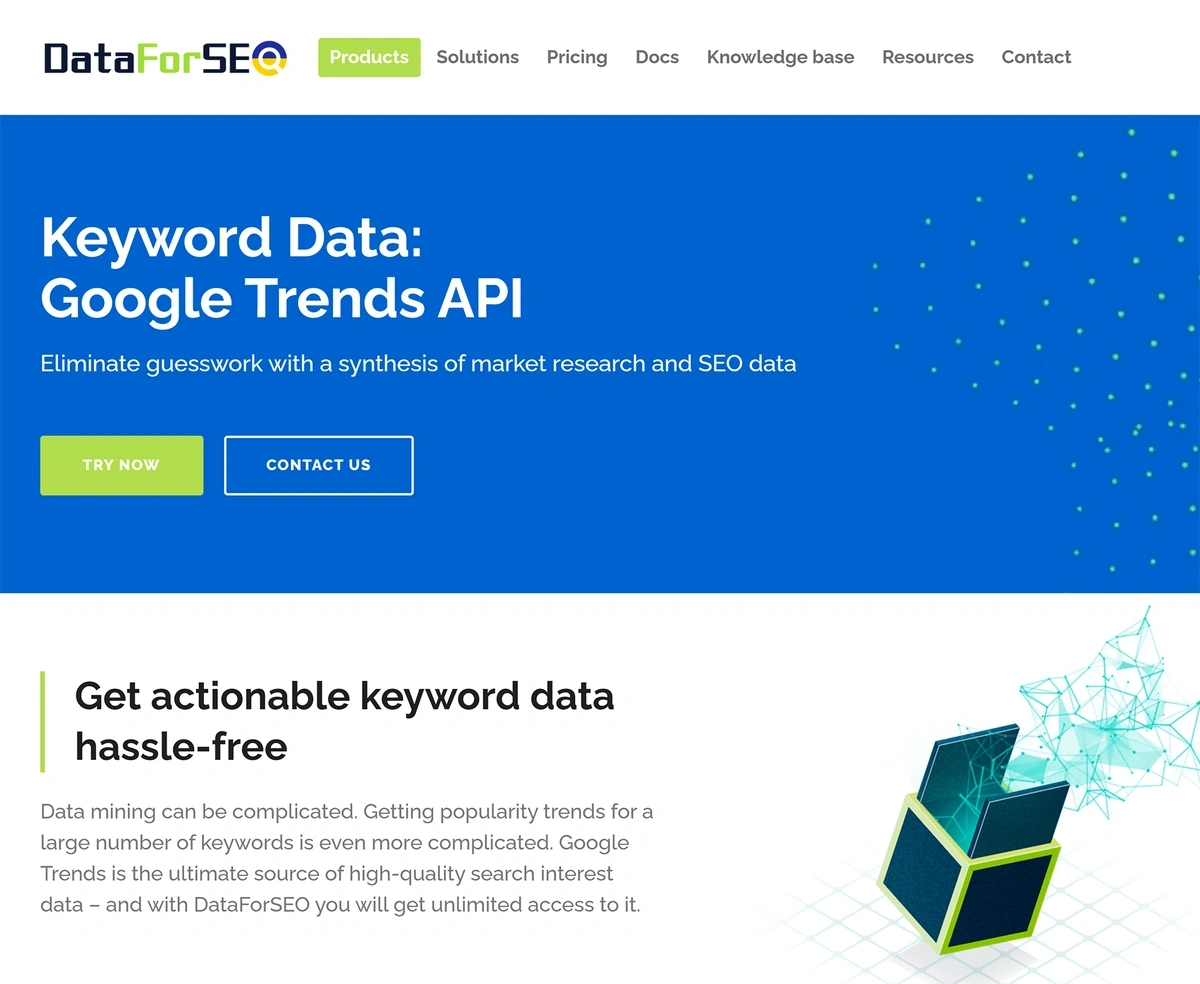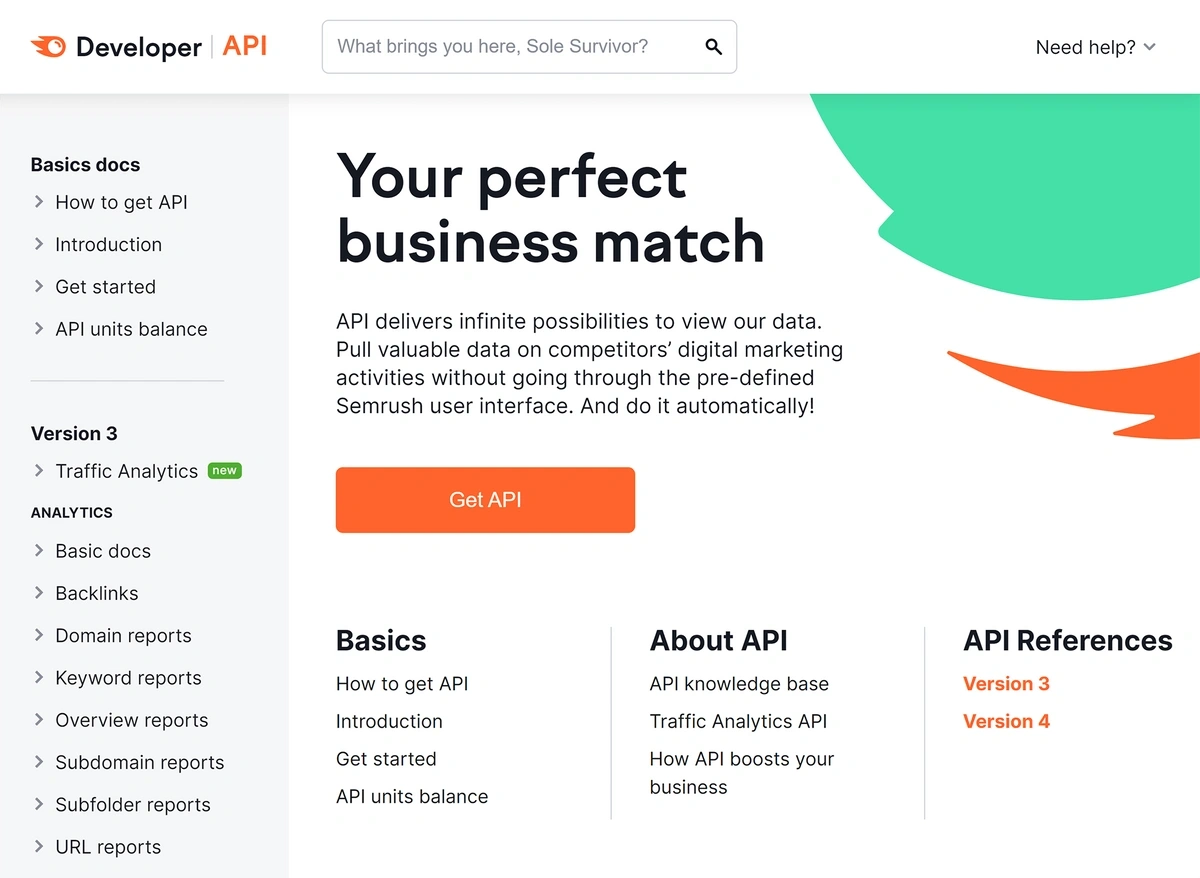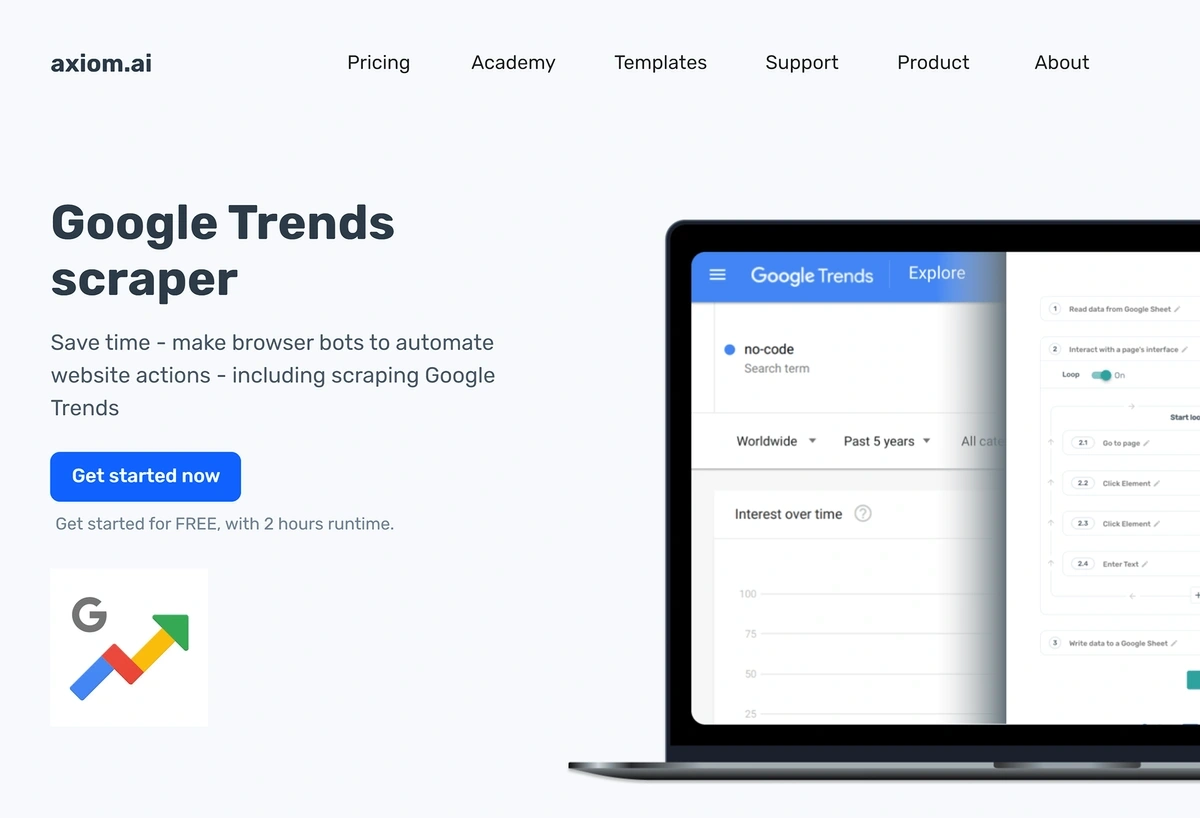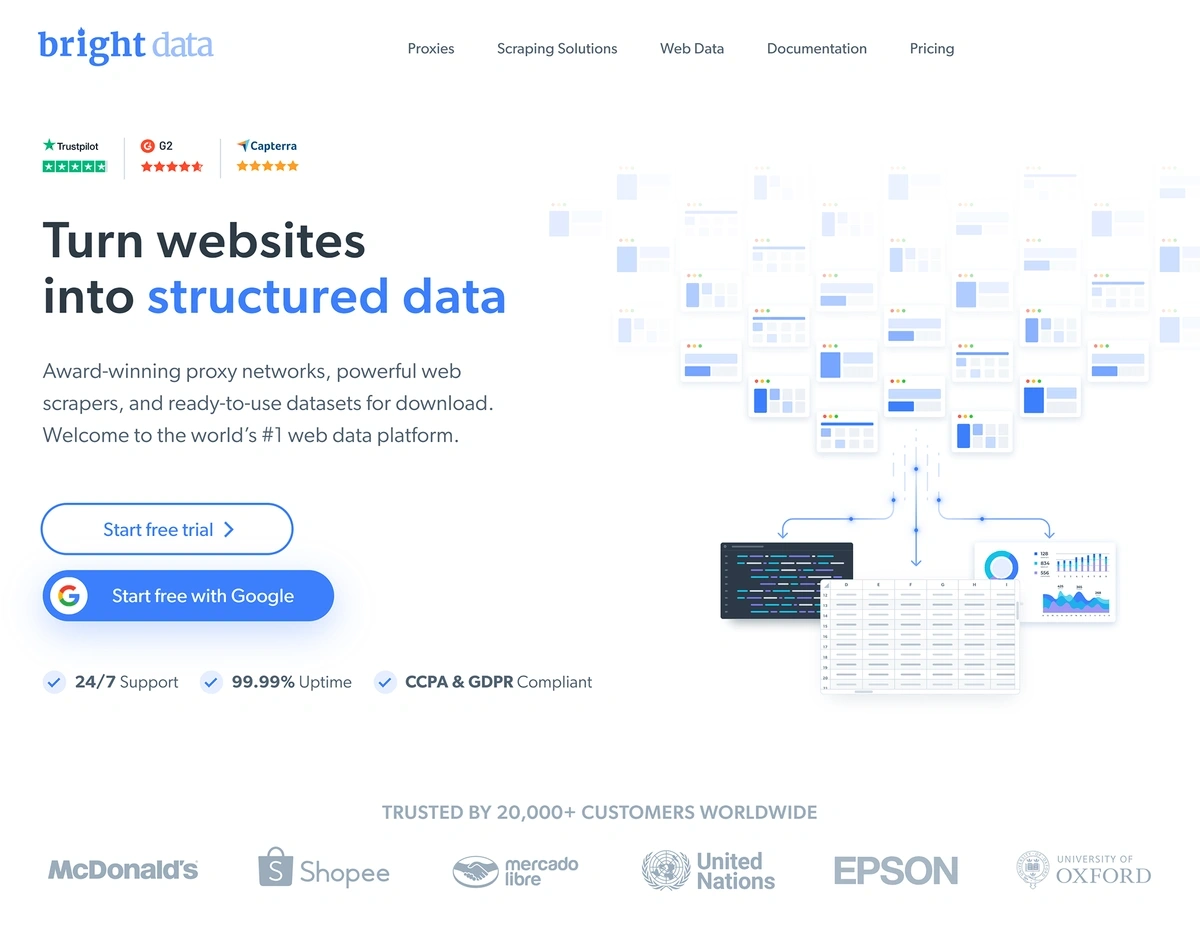
7 Best Pytrends Alternatives & Competitors
Pytrends is an unofficial, Python-based open source API for obtaining Google Trends data at scale.
Pytrends is free to download, but it’s not the most reliable way to gather data. Using unofficial APIs can go against Google’s terms of service, so you might find that the API stops working at some point.
If that happens, you’ll want to have an alternative API for Google Trends lined up. And to avoid the issue entirely, you can use an official API for a different trend spotting platform.
The seven tools in this guide give you a range of options—from pure Pytrends alternatives to official APIs for other sources.
1. Exploding Topics
Exploding Topics is a trend spotting tool that provides some of the same data you’ll find through Google Trends—and more. Our platform includes an official API that you can use to pull up to 60 requests each minute.
[ss of ET homepage signed out]
You can use our API to access information like:
- Trending topics: This includes descriptions, date of first detection, and the number of searches for the topic in the past month
- Popular e-commerce products: This includes growth levels, product descriptions, date of first detection, and the number of searches for the product name in the past month
- Startup data: This includes keywords related to trending startups, date of first detection, and the number of searches for the startup in the past month
Our data goes back 15 years, and we update the database daily—so your API calls will always deliver up-to-date information.
We use multiple sources to find our data, too, including listening to online conversations across blogs, websites, social media, traditional media, and more. When coupled with search volume data, this gives you a great overview of how popular a topic, product, or startup really is.
If you have any trouble accessing information with our API, you can email our team directly. There’s no need to wade through online forums to get help with an unofficial API like Pytrends.
How Much Does the Exploding Topics API Cost?
Exploding Topics Pro Business subscribers can access our API. This plan costs $249 per month, billed annually, and includes ten user seats—great for teams that need a reliable API for research.
Plus, you can give the business plan (and our API) a try for one week with no risk—your trial only costs $1.
As part of your plan, you'll get access to other tools and features like:
- Our searchable, online trends database
- Weekly premium trend reports and instant trend alerts about the topics of interest to you
- Our entire reports library
- A meta trends analysis feature that breaks down how trends intersect and link together
- CSV data export
- Custom reporting features
You can also view our API documentation up front to make sure it’s a good option for you.
2. Apify
Apify’s unofficial Google Trends API can extract trend data into Google Sheets or HTML, JSON, and CSV files.
You can retrieve data points about lists of keywords, including:
- Trending topics by time frame
- Trending topics by region
- Trend categories
The developers behind this Google Trends Scraper recommend pulling data for 1,000 keywords at a time, which is very resource intensive. As a result, you may find that Google blocks your access at any point.
However, as Apify is a paid platform, you can get access to help and support documentation easier than when using an open source tool like Pytrends. There’s a nice selection of how-to guides and other resources available on Apify’s website.
How Much Does Apify Cost?
Basic Apify plans are free and include $5 in credits every month. Based on how quickly you use up that credit by making API calls, you may need to either add additional money to your account, or purchase a paid plan.
Paid Apify plans start at $49 per month or $44 per month if billed annually. All the money you pay can go into your credit balance, and you’ll get access to some additional features—including the ability to do more concurrent runs—as well.
3. SerpApi
SerpApi offers several APIs to access Google data, including Google Trends.
This tool can provide access to metrics including:
- Trending search queries
- Interest over time periods or by location
- Related topics
You can also see additional related queries and keyword suggestions using SerpApi’s Google Trends Autocomplete API.
There are varying limits on how many terms you can input or results you can return when using this API, so be sure to read through the developer’s documentation before using the tool.
How Much Does SerpApi Cost?
Anyone can sign up for SerpApi and conduct up to 100 searches each month at no cost. If you have heavier usage needs, you’ll want to opt into a paid plan. Options start at $50 per month for up to 500 searches.
Interestingly, SerpApi’s more expensive “Production” and “Big Data” plans—the latter of which supports 30,000 searches per month—include additional legal protections.
If you pay for one of these plans, SerpApi will assume legal liability for the scraping and parsing that you do with their tools, unless you’re using the service to support illegal activity like cybercrime or terrorism.
4. DataForSEO
DataForSEO is another unofficial Google Trends API.
You can use it to pull data including:
- Search volume fluctuations across Google search, shopping and YouTube
- Search trend interest by region
- Related search terms
- Related trending topics
DataForSEO is a bit more versatile than Pytrends—it works with a variety of coding languages including Python, PHP, NodeJS, and C#. It can also make up to 2,000 API calls per minute.
As with other unofficial tools, the DataForSEO API could stop working at any time. But, because this tool is hosted by the company that created it—similar to how SerpApi works—you’ll have easier access to more resources and help than when using Pytrends.
How Much Does DataForSEO Cost?
DataForSEO doesn’t offer monthly plans—it’s a strictly pay-as-you-go service. You’ll only pay for the number of API calls you make, and the company says that its users can typically analyze 10,000 terms for $22.50.
5. Semrush API
The official Semrush API lets you quickly retrieve information about over 25 million keywords.
You can further enhance this data by adding in information about:
- 808+ million domains
- 43 trillion backlinks
- 142 geographic locations
- 16 locations
While the Semrush API doesn’t directly pull information from Google Trends, you can use web search interest to get an idea of how interest in specific terms has fluctuated over time or by location.
And, as with other official APIs, you’ll be able to get support from the Semrush team if you need it.
If your work involves SEO research and activities beyond looking at Google Trends data, then Semrush’s API could be a great solution. You can configure the API to keep you updated on ranking changes and even integrate it into your internal dashboards.
How Much Does the Semrush API Cost?
API access is available to Semrush users on a business-tier plan.
The business plan costs $499.95 per month ($416.66 per month if billed annually) and includes support to help you migrate your data from another SEO tool if necessary.
6. Axiom
Axiom is a tool that lets you create an automation and run it in your web browser.
Rather than scraping Google Trends website data through an unofficial API, you build a bot that automates the process and conducts searches on Google Trends for you. It can conduct actions like:
- Switching browser tabs
- Solving CAPTCHAs
- Clicking on buttons and fields
- Entering text
- Exporting data to a CSV file or Google Sheet
- Reading data from a Google Sheet
- Removing results based on keywords
The best part is that you don't need to know how to code to use Axiom. Anyone can use the tool to create automations with its drag-and-drop, no-code workflow builder.
How Much Does Axiom Cost?
You can build a bot and run it for two hours at no cost. This will let you get a feel for how the automation works.
If you like it, and want to keep using Axiom’s service, you’ll need to select one of their paid plans starting at $15 per month for up to five hours of run time.
Axiom estimates you can scrape 300 pages or fill out 180 forms in an hour, though this may vary based on the number of action steps you include in your automation.
7. Bright Data
Bright Data is a platform that offers several solutions for accessing Google Trends and search data.
With Bright Data, you can:
- Build and automate web scrapers
- Create browser automation scripts using JavaScript
- Emulate users in other locations with web proxies using real IP addresses
- Scrape SERP results from Google, Bing, DuckDuckGo, Yandex, Baidu, Yahoo, and Naver search engines
- Request that the Bright Data team create datasets from any public website
- Track e-Commerce SKU data, including pricing and sales trends
- Unblock any public website with automated browser fingerprinting and CAPTCHA solving
The company says that they vet all of their partners and customers to ensure better compliance with privacy laws like GDPR and CCPA. End users are, of course, still responsible for appropriately using the data they collect with Bright Local’s tools.
It’s important to note that in order to use Bright Local, you need to understand how to code. To create Google Trends scraper automations without coding, you’ll want to use Axiom.
How Much Does Bright Data Cost?
Bright Data bills its users separately for the different tools and services they use. You can opt for a pay-as-you-go plan, or buy a monthly subscription for the features you use most. Some paid plans also offer API access to speed up your work even more.
For example, you might pay:
- $8 to load and scrape 1,000 web pages with a pay-as-you-go browser automation
- $500 per month and $2.30 per 1,000 pages when scraping SERPs with the Bright Data API
- $15 per gigabyte of data consumed through a proxy, plus $0.50 each time you switch IP addresses on a pay-as-you-go plan
You’ll need to add up all of your expected usage costs to see if Bright Data is the most time- and cost-effective solution for you.
Conclusion
If you need to access a fairly small amount of Google Trends data, or only pull data occasionally, doing so manually or using a browser automation may be more reliable than using an unofficial API.
The only truly reliable way to access trend data in high volumes, though, is to use an official API—either from an SEO tool like Semrush or another trend spotting service like Exploding Topics.
While you will need to pay to use official APIs, it’s worth it in the long run. You’ll be able to get the data you want, minimize disruptions to your workflow, and get support when you need it—all without potentially violating Google’s terms of service and losing access.
Stop Guessing, Start Growing 🚀
Use real-time topic data to create content that resonates and brings results.
Exploding Topics is owned by Semrush. Our mission is to provide accurate data and expert insights on emerging trends. Unless otherwise noted, this page’s content was written by either an employee or a paid contractor of Semrush Inc.
Share
Newsletter Signup
By clicking “Subscribe” you agree to Semrush Privacy Policy and consent to Semrush using your contact data for newsletter purposes
Written By


Josh is the Co-Founder and CTO of Exploding Topics. Josh has led Exploding Topics product development from the first line of co... Read more

